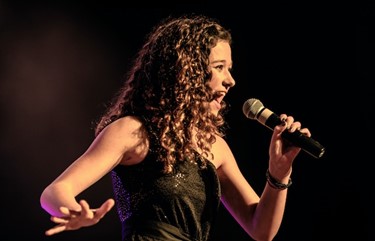Jennifer Lawrence and Channing Tatum got their start as teenage models. Jennifer Lopez landed her first gig as a dancer in Europe. Rapper Eminem honed his skills while competing in underground rap battles in Detroit.
Sarah Jessica Parker, Meryl Streep, James Earl Jones, and Viola Davis? All got their start on Broadway.
There’s no secret formula to break into the entertainment industry. James Snyder explains that it takes talent good luck and networking. It can require years or decades of practice and sacrifice, whether the goal is Broadway, TV, film, or music. And it always takes hard work.
Dream, But Have a Goal
Actor Denzel Washington once said that a dream is just a dream without a goal. Millions may dream of acting and singing professionally, but millions fall short. A good place to start is thinking about the reasons why one is interested in acting and singing. Is it a hobby or a career? Is it to become a respected character actor or a star? Is Broadway a better fit than Hollywood?
If “career” is the answer, do some research. Find a great teacher, find a good acting class, or undergo intensive singing training. Finding an agent or booking auditions comes later, but in order to set oneself up for success, breaking into the industry means committing completely to the career goal.
Network
That old saying that it’s that a big part of landing a job is who you know? That’s especially true in the entertainment industry and it’s even more true for singers and actors. Budding performers will likely need to relocate to either Los Angeles or New York City and the networking should begin right away.
It helps to meet and befriend fellow actors, whether it’s in classes or during auditions. Networking should extend to connecting with theater and TV/film directors if possible. These connections are often invaluable throughout a performer’s career — in good times and bad.

Self-Promote
In the pursuit of an acting role, unwavering self-belief becomes the cornerstone, fortifying the path to success amidst the challenges. Beyond networking, breaking into the industry requires a stellar, well-crafted resume and a portfolio (acting reel, modeling work, singing demo) that is always up to date.
This may include professional headshots or an acting demo reel to show range and experience. Many actors and singers aren’t afraid to promote themselves online as well through social media, especially when they are struggling to get a break.
Keep Learning
No gig is too small in the beginning, whether it’s a bank commercial, a blink-and-you-missed-me film extra, or a Broadway understudy. All are priceless learning experiences.
But landing jobs doesn’t mean an entertainer has mastered their craft. Even the most successful actors still take acting classes or engage in workshops. Singers still practice for hours each day and get vocal lessons even if they get a record deal or hit it big on a TV show. Oscar, Tony, and Grammy winners often still need to audition for roles or gigs.
The most important things an entertainer can do when trying to break into the industry is believe in themselves and keep working hard.



